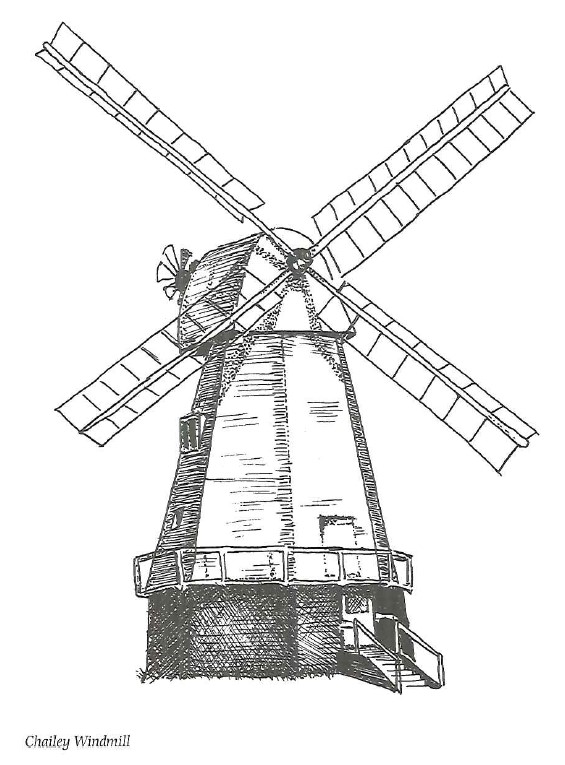Even a confirmed teetotaller could find himself seeing double at the Half Moon. Many of the pub’s regulars of yesteryear are recorded in a giant painting which takes pride of place in the bar, raising their glasses in a cheery salute to the beholder. Landlord Terry White commissioned the unusual work of art as a tribute to his customers and it was completed over a nine month period in 1979 by Sussex portrait painter Dick Leech. More than 100 local folk are depicted at their favourite haunt in what Mr White described as “an historical document’.
Such a communal kind of immortality would not have pleased a Plumpton resident of earlier generations. Old Martha, a strange, witch-like old lady from the 19th century, had a morbid fear of being photographed for posterity by enthusiasts in search of village oddities (she was eventually captured on film from the safety of a shrubbery).
Old Martha was reputedly 100 years old and held in awe by all who knew her, believing she had the power of good and evil and could cast spells. She lived in a hovel but was reputed to be rich, with houses and land of her own. She made no secret of the fact that somewhere she had hidden a bagful of golden guineas. Dressed in outlandish attire she would tramp the countryside for miles singing and dancing as she went and ringing little bells. Despite her great age she was as nimble and fast as a hare, into which it was maintained she would change on occasion. She would cover great distances with an enormous basket under her arm, often running backwards. A journey over the Downs to Brighton, picking up many pounds through the practice of her magic arts, was commonplace. The secret of the golden guineas, by the way, died with her.
Gold of another kind is associated with Plumpton Place, a half-timbered Tudor house surrounded by a moat and the most impressive building in this pretty but scattered Downland village. During the reign of Henry VIII, Sir Leonard Mascall is said to have introduced golden carp and golden pippins to England here. According to an old proverb:
‘Turkeys, carp, hops, pickerel and beer, Came into England all in one year.’
The illustrious Sir Leonard seems to have held an important post in the household of the Archbishop of Canterbury. He is called ‘clerk of the kitchen’, presumably a kind of steward. In his own home he appears to have been something of an experimental farmer, with flocks and herds that grazed on the Downs above his house, and he wrote many books from … the Arte and manner howe to plant and graffe all sortes of trees, howe to set stons and soewe Pepines, to make wild trees graft on to how to take spots and staines out of Silks, Velvets and Linen, and Woollen Clothes. Not riveting titles, perhaps, but he was a best-seller long before Shakespeare got into print.
Who was the Plumpton Poisoner? We shall probably never know. Fear gripped the village in the spring of 1935 when someone tried to poison Major Arthur Farrant, a veterinary surgeon of national repute who lived at The Rest. Strychnine was put in his coffee and rat poison in his water tank. The Major survived and no culprit was ever found. There was talk in the village for years, of course, and a strong hint that he may have had more than an idea of the poisoner’s identity but for Some reason wanted to shield them was revealed by the News Chronicle, whose reporter wrote: ‘Major Farrant asked me, as did his wife, to make it quite clear that they are well aware of the nature of certain gossip which is circulating in the village. Major Farrant said that if he could trace the author of certain rumours which purport to name the person responsible for the poisoning attempt he would take immediate legal action.’
John Dudeney, the shepherd who became a schoolmaster, lived with his grandfather at Plumpton as a boy at a house now identified as The Cottage, across the road from the Half Moon. No doubt he would climb up to lofty Plumpton Plain to help trap wheatears to sell in the towns. They were a great delicacy in the 18th century and nicknamed The English Ortolan. The numbers snared ‘amounted annually to about one thousand eight hundred and forty dozen’. No wonder the wheatear soon became a rarity!
